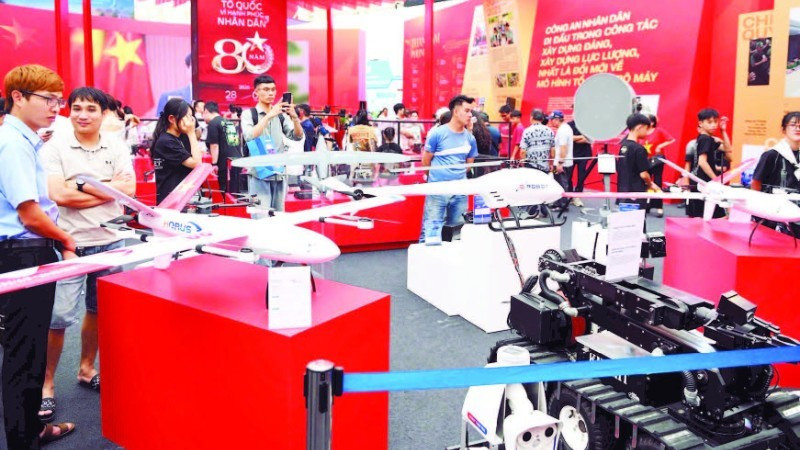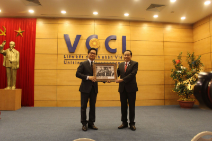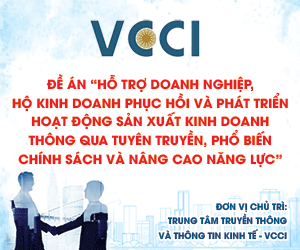Mastering strategic technologies: initial steps
The concept of strategic technologies has been introduced for the first time in Resolution No. 57-NQ/TW, which identified institutions, human resources, infrastructure, and data as the core pillars for encouraging innovation.

Strategic technologies are expected to create breakthrough development and high added value, lay foundations for other industries, and help position Viet Nam at the forefront of science and technology. To make these aspirations come true, the decisive factor is the development of high-quality human resources.
Many domestic enterprises have already begun implementing strategic technology projects, affirming endogenous capacity, creating the foundations for new competitiveness. What is needed now is to set reasonable targets, which are divided into phases, with the state’s support in research infrastructure, financial assistance, and institutional improvements to ensure the formation of strategic industries the country.
A turning point in policy thinking
Based on the orientation set out in Resolution No. 57-NQ/TW, the Ministry of Science and Technology advised the government to submit the Law on Science, Technology and Innovation 2025 to the National Assembly, in which, strategic technologies have become a central orientation for the state to mobilise resources, issue policies, and carry out long-term development programmes.
In parallel, the prime minister’s Decision No. 1131 stipulated a list of 11 groups of strategic technologies and 35 strategic technology products, which are major national challenges for enterprises, research institutes, and universities to tackle.
The institutionalisation of strategic technologies marks Viet Nam’s transition from mainly applying core technologies to mastering strategic technologies, which has significance for economic growth and national security.
A survey by the Ministry of Science and Technology showed enterprises, institutes, and universities have taken initiative in research and development of strategic technologies and now have some products on the right track such as products of Viettel Group, CMC Technology Group, Phenikaa Group, Viet Nam National University, and Ha Noi University of Science and Technology.
With the viewpoint that products must be clear and highly marketable, the Ministry of Science and Technology has recently proposed a list of strategic technology products for implementation in 2025, based on the ideas of ministries, sectors, and localities. Three strategic technology products were prioritised for immediate deployment: Vietnamese-language virtual assistants and large language models; 5G systems and devices; and edge-processing AI cameras.
Some products should be selected to produce for testing, drawing experience, and perfecting the policy model. These fields are globally “hot”, essential for Viet Nam’s modernisation process. It would not only help in creating core technologies that determine national competitiveness but also in opening opportunities for Viet Nam to deeper integrate into global value chains.
Technology experts stress that bridging the gap with major tech powers in above strategic technology product development requires serious, long-term, and comprehensive investment in human resources, finance, and research infrastructure.
According to Deputy Minister of Science and Technology Hoang Minh, the Party and state’s guideline in the next period is to focus on double-digit growth, high-quality growth, and growth based on science, technology, innovation, and digital transformation. Therefore, science and technology, innovation, and digital transformation must address the country’s “big problems”.
The Ministry of Science and Technology aims to master at least 20 strategic technology products by 2027 and more than 25 by 2035, while also fostering the development of strategic industries, which are expected to contribute 15–20% of GDP.
To achieve this, the state will shift the focus of technology development towards enterprises, regardless of whether they are state-owned enterprises or private enterprises. Large businesses and reputable research organisations will be tasked with developing strategic products, industries, and technologies, because businesses, being closest to market demands, will have both the motivation and pressure to turn technology into valuable products.
Around these enterprises, an ecosystem linking research institutes, universities, and management agencies will form a combined force to master technologies. Basic research will also focus on supporting the development of strategic technologies and products.
Enterprises assert endogenous capacity
Many domestic enterprises have been affirmed their pioneering roles in strategic technology product development.
Among state-owned businesses, Viettel Group has developed 10 out of the 11 groups of strategic technologies. These are just early results, but they have confirmed the emergence of endogenous capacity and created confidence in solving major national challenges.
Viettel leaders said that setting next-generation mobile networks (5G/6G) as the top prioritised strategic technology will make vital contributions to national infrastructure development.
With superior speed, low latency, and massive connectivity, 5G will be an important foundation to promote digital transformation, significantly contributing to implementing the national strategies on development of digital government, digital economy, and digital society.
In the coming time, Viettel Group plans to continue pouring strong investment in 5G-Advanced/6G. Its roadmap includes commercialising 5G-Advanced equipment by 2027 through open, virtualised models with superior features compared with current 5G, and piloting producing 6G devices on live networks between 2028 and 2030.
CMC Technology Group’s strategic projects — including its hyperscale Data Centre and the newly established CMC Open AI Company — are contributing power for calculating, training and operating large language models as well as creating an open environment for AI application test and commercialisation in the coming time.
Policies, programmes, and projects have begun to take shape, but the core issue lies in high-quality human resources. Although this is the biggest “bottleneck”, it is also the key to shortening Viet Nam’s technological gap with the world.
Phenikaa Group and Phenikaa University are concentrating on five priority fields of the 11 strategic technology groups: semiconductors, autonomous systems, energy storage, biomedicine, and advanced materials. Their approach combines mastering core technologies while building research–training–commercialisation ecosystems, establishing spin-offs companies such as S-Phenikaa and Phenikaa-X to bring research results to market.
To truly turn strategic technologies into national competitiveness, many businesses argue for long-term orientation to foster these products into full-fledged industries. This requires expanding spending of the Strategic Technology and Industry Investment Fund, not only supporting R&D or start-ups but also covering spending on product improvement, perfecting features, quality, and cost of products. These are decisive factors for strategic technology products to overcome early-stage period, enough capacity to compete in the international market.
The state should soon issue evaluation criteria for localisation rates that focuses on research value and design of product, instead of basing on only raw materials or components. This approach would help domestic tech firms take control of key stages, creating a solid foundation before expanding production and exports.
It needs to apply mechanisms of state investment in key laboratories and testing facilities operated by enterprises to valuate strategic technology products. Another important proposal is to establish specialised industrial zones for strategic technologies such as semiconductors, aerospace, and space, to concentrate resources for R&D and production in a closed chain.
Deputy Minister Hoang Minh noted that 40–50% of state budget resources will be prioritised for mastering strategic technologies, including investment into national key labs, shared laboratories, and modern technical infrastructure. The ministry is finalising a national programme for developing strategic technologies and industries.
Technology experts underlined that strategic technology product implementation must have specific roadmap in the context of limited resources. Most importantly, it must set reasonable targets according to stages to affirm the mastering capacity while avoiding risks to Viet Nam’s long-term technology strategy.
Policies, programmes, and projects have begun to take shape, but the core issue lies in high-quality human resources. Although this is the biggest “bottleneck”, it is also the key to shortening Viet Nam’s technological gap with the world.








